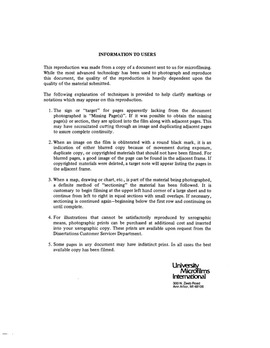| dc.contributor.author | Roberts, Gary Leland. | en_US |
| dc.date.accessioned | 2013-08-16T12:29:20Z | |
| dc.date.available | 2013-08-16T12:29:20Z | |
| dc.date.issued | 1984 | en_US |
| dc.identifier.uri | https://hdl.handle.net/11244/5322 | |
| dc.description.abstract | Ultimately, the study uses the Sand Creek Massacre to identify the common denominators of massacre broadly conceived and to probe why such events occur. Placing Sand Creek within the context of similar events throughout American history--from the massacre of the Pequots at Mystic in 1637 to My Lai--it treats Sand Creek not as an anomaly but as a human tragedy of which every generation is capable. | en_US |
| dc.description.abstract | On November 29, 1864, United States volunteers under the command of Colonel John Milton Chivington attacked a village of Cheyenne and Arapaho Indians on Sand Creek in eastern Colorado Territory, killing more than 150 men, women, and children. The "Sand Creek Massacre, " as the incident came to be called, prompted two congressional hearings and a military investigation, contributed to worsening Indian-white relations on the central plains, and precipitated a public controversy which fueled a historical debate which still rages today. In this case study of Indian-white conflict, the view that the United States government systematically followed a policy of genocide against the Indians and the notion that massacres can be dismissed as the psychotic behavior of a few individuals are both rejected. The study argues instead that massacres are the work of ordinary people under stress. | en_US |
| dc.description.abstract | This study examines the Sand Creek affair in two ways. First, it presents a detailed chronological account of the origins and consequences of the massacre, examining the multiplicity of forces at work in the tragedy. Special attention is given to the cultural differences between the Cheyennes and the Americans, to white attitudes toward the natives, to political and personal motives of the principal characters, and to the factors which transformed a frontier skirmish into a public controversy. Second, the study examines the Sand Creek Massacre as a symbol of the failure of American Indian policy in the nineteenth century and seeks to find in the symbology of Sand Creek keys to understanding why massacres occur. The study explores in the rationale of massacre in Colorado, probes the historical controversy from its origins in the aftermath of the massacre to its present manifestations in historical and popular writing, and examines the use of the Sand Creek image by the Indian reform movement and by modern reformers. | en_US |
| dc.format.extent | 2 v. (xviii, 970, [2] leaves) : | en_US |
| dc.publisher | The University of Oklahoma. | en_US |
| dc.subject | History, United States. | en_US |
| dc.subject | United States History Civil War, 1861-1865. | en_US |
| dc.subject | Sand Creek Massacre, Colo., 1864. | en_US |
| dc.title | Sand Creek : tragedy and symbol / | en_US |
| dc.type | Thesis | en_US |
| dc.thesis.degree | Ph.D. | en_US |
| dc.note | Source: Dissertation Abstracts International, Volume: 46-01, Section: A, page: 0247. | en_US |
| ou.identifier | (UMI)AAI8505915 | en_US |
| ou.group | College of Arts and Sciences::Department of History | |
